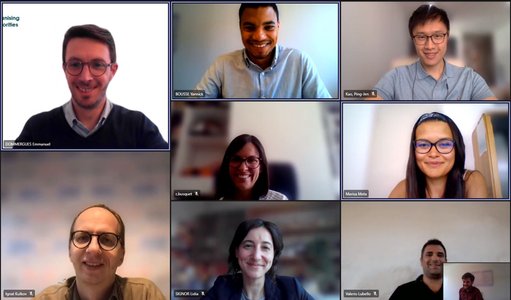GECKO project supporting new mobility regulation shares final results and lessons learnt

The GECKO research project sought to support regulators and decision makers, who have a critical role to play in ensuring new mobility solutions complement a sustainable city network. Through evidence-based research, the project partners have discovered drivers and barriers affecting the deployment of business models, technologies and services. By engaging with a range of stakeholders, including authorities and new mobility providers, the project has offered guidance, recommendations and best practices.
The final event, led by the Project Coordinator, Yannick Bousse, shared insights and hosted discussions with various project partners. Topics covered shaping future mobility with business model innovations, regulators and governance frameworks and mobility innovations, and recommendations for policy makers. One of the project’s deliverables, presented by Marisa Meta from FIT Consulting, was the MOBY – Map of regulatory framewOrks for the moBilitY of the future - which maps 228 regulations across the world related to new mobility solutions and scored them based on the city/country’s readiness to implement them and further highlighted barriers and solutions to these regulations.
The event gathered more than 87 participants from of the urban mobility sector, namely: Public Transport authorities (PTA), city authorities, new mobility service operators, Public Transport operators (PTO), mobility innovations manufacturers, research institutes and more. Participants mainly came from the European Union but also from countries on other continents, from Asia, Oceania or America.
key takeaways from the project
What were the key takeaways? The project’s stakeholders, a range of public and private actors, summed this up very nicely:
In addition, this is what our panel of project partners had to say during the event:
- There are no strict guidelines and rules for service providers to operate and innovation is crucial for them to survive. When cities raise new barriers, providers must adapt and how they react can be unique. Starting with a concrete and relatively strict regulations can form a basis, whereby providers aim to work alongside public transport, and then moving towards an adaptive regulatory framework will support these transport providers in innovating their business model.
- The COVID-19 pandemic has been a double-edged sword for sustainable mobility: One the one side more people are interested in individual transport and on the other side it was acted as a catalyst for policy makers and authorities in pushing for sustainable mobility as part of the solution towards healthy and inclusive cities. New mobility must surely be considered as a part of the transport network, complimenting mass public transport, and refraining from pushing more people back to their cars.
- Everything boils down to our climate goals and so the short-term goals for new mobility must complement the long-term vision of reducing greenhouse gas emissions and improving social equity.
- Cities are moving from a restrictive approach to a more open approach with new mobility services. There is no one size fits all approach to regulation. We now have a variety of cooperative tools and models, and cities can use these in their own way to develop solutions for managing their transport services.
- Public-private partnerships, platforms for open discussion and dialogue are one of the best ways to build trust and encourage cross-sector collaboration between stakeholders. There is no silver bullet but communication is an effective tool for breaking the silo-thinking around regulations.
After all the discussions during the event, the final question was ,“What happens next?”. Discussions around regulation must continue, cross-sector collaboration must be supported and best practices must continue to be shared. The next steps from GECKO is to see how these cities use these supportive tools, combine them, and formulate regulations to meet their city’s strategic goals and objectives.
Click here to check the recordings and download the presentations
Back to all News

